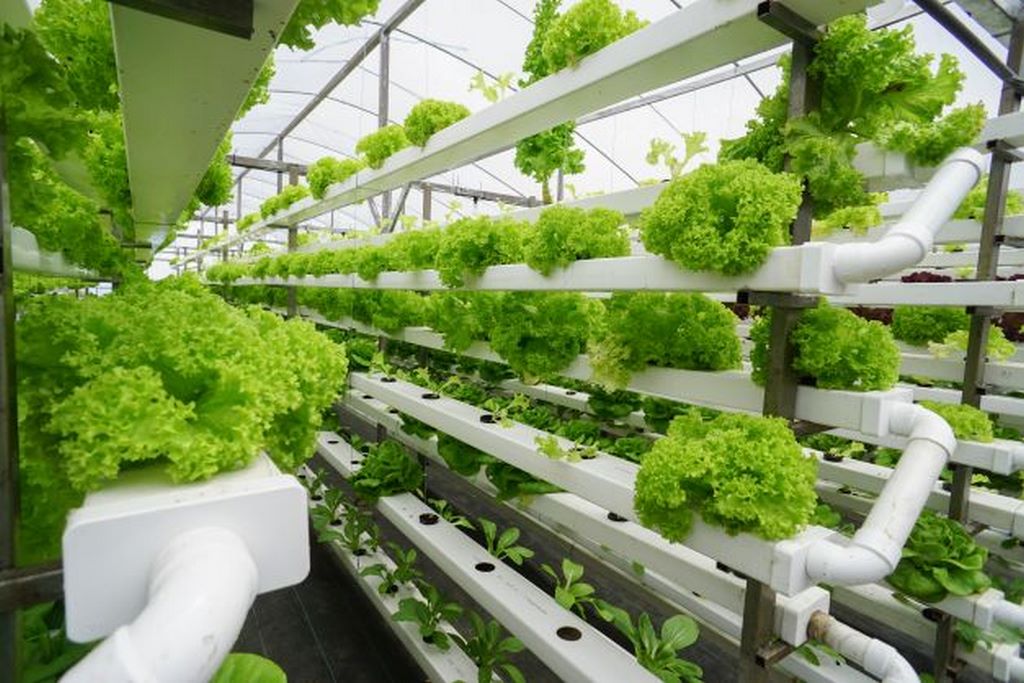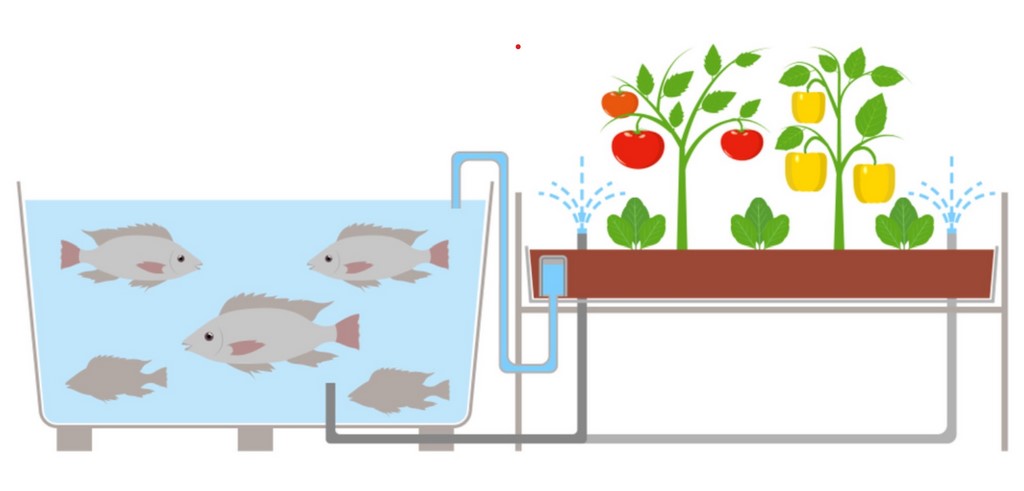Understanding Aquaponics


As drought increases in frequency and severity, all the while the demand for affordable food sources rise with growing populations, the need for efficient farming practices becomes ever more urgent. One technique, aquaponics, might just be part of the answer, and could be a possible growth opportunity for watershapers.
By Eric Herman
Aquaponics is a farming technique that proponents believe can have a dramatic impact on the ability to efficiently grow crops with greatly reduced use of water, fertilizer, and physical space.
At the heart of aquaponics is the combined ability of fish to produce nutrients in the form of waste, and plants’ need for those very same compounds. The term itself is a compound of aqua culture (raising fish) and hydroponics (growing plants without the use of soil).
The process has been defined as putting fish to work to grow plants. In many ways, aquaponics has the advantage of essentially mimicking the processes that take place in nature – particularly in natural wetlands.
FROM THE WETLANDS
It’s one of nature’s miracles that resides at the heart of balanced ecosystems on every content accept Antarctica. Known generally as the “wetlands effect” it’s the process through which plants absorb nutrients from water and, among other things, it’s why natural wetlands associated with lakes, rivers and oceans are so critical to undoing the insults humans inflict on the planet.
Wetlands are loosely defined as areas where soil is saturated with water giving rise to scores of plant and animal species, including a range of beneficial microorganisms.
Through a chemical process known as “dentrification” or the “nitrogen cycle” plants and microorganisms work together to transform and absorb nitrogen-based compounds, the primary component of contamination that results in massive algal blooms that rob water of oxygen required to sustain diverse ecosystems.
How effective is this process? Various studies indicate that contaminated water passing through riparian wetlands can see chemical level reduction measuring more than 85 percent. That process of chemical uptake can spell the difference between healthy bodies of water, both fresh and saltwater, and those that are nearly devoid of life.
Humans have been using the wetlands effect in various ways dating back to the ancient Egyptians, long before we were worried about the effects of agricultural and industrial contamination. These days, the wetlands effect is used widely across a range of applications and offers a set of elegant solutions to problems associated with mass population growth and the resulting scarcity of food resources, such as aquaponics.
Not only do natural wetlands serve as the ultimate chemical filters, man-made systems are now also commonplace as an alternative to mechanical filtration and chemical treatment. One example, people who build ponds and streams will create massive biological filters in the form of bogs, which do the lion’s share of maintaining quality water.
BROAD APPLICATIONS
For decades now, a similar approach is now being used to create “Natural Swimming Pools” in which small wetlands or “regeneration zones” are used to filter water. And in yet another application, man-made floating islands that contain specific plant species are used to clean contaminated bodies water, as well as providing habitats for fish, birds, insects and water-loving land animals.
Aquaponics combines the fish and plants into nearly self-sustaining systems in which populations of fish are maintained to load water with nutrients that is transformed by bacteria into nitrates, which is in turn circulated through crop roots to generate accelerated growth that’s not possible in traditional farming practices. After the plants have absorbed the nutrients, the water is returned to the fish tank and the cycle repeated.
Results vary depending on a variety of factors, but generally speaking, using aquaponic systems, plants grow at twice the rate compared to conventional farming, they use no fertilizers and a mere 2-5% the water required in traditional farms.
Over the past 20 years, following a groundbreaking study from the University of Virginia, numerous companies have emerged using aquaponics for both commercial and residential applications. Systems can be tailored to help meet nutritional needs for individuals and/or their families in urban settings where systems can located on balconies, patios, small yards and rooftops, or they can upsized to generate mass production for restaurants and grocery stores.
The trend has been juiced by public concerns over GMOs and likewise driven by the demand for “organic” foods. The dramatic reduction in water usage has further driven interest in regions impacted by drought.
It’s a wonderful concept and certainly one worth exploring for anyone interested in growing their own food, but if I may indulge some constructive speculation, there may be yet another facet to aquaponics that is yet unexplored, that being possible connection between the pond and stream industry and Aquaponic systems. In a sense, there could well be an analogy between Natural Swimming Pools, which as mentioned above use plantings and bacteria colonies to purify water, and ponds associated with aquaponic systems.
I can’t help but wonder if existing and prospective pond owners were aware of the possibility many might just favor the idea of using their ponds containing fish as the nutrient component in an Aquaponics system.
Certainly, marrying decorative ponds containing Koi, one of the fish species favored for aquaponic use, with a growth operation requires adhering to a number of technical specifics, chiefly establishing a balance between the number of fish and amounts of plant material supported by their waste.
Fortunately, based on the reams of information readily available covering the system requirements and parameters, the learning curve is relatively short and the initial investments in setting up a system relatively low. Anyone who knows how to build ponds, or even swimming pools for that matter, is already well on their way to owning the skillset required to work with aquaponic systems.
Given how powerful and adaptable the wetlands effect is in other settings, it would only make sense that the decorative water industries consider adapting some form of aquaponics as an option for ecologically minded consumers.
If nothing else, consider the suggestion “fish” food for thought.
Graphic by NeutronStar8 | Shutterstock, Photo by Lano Lan | Shutterstock










